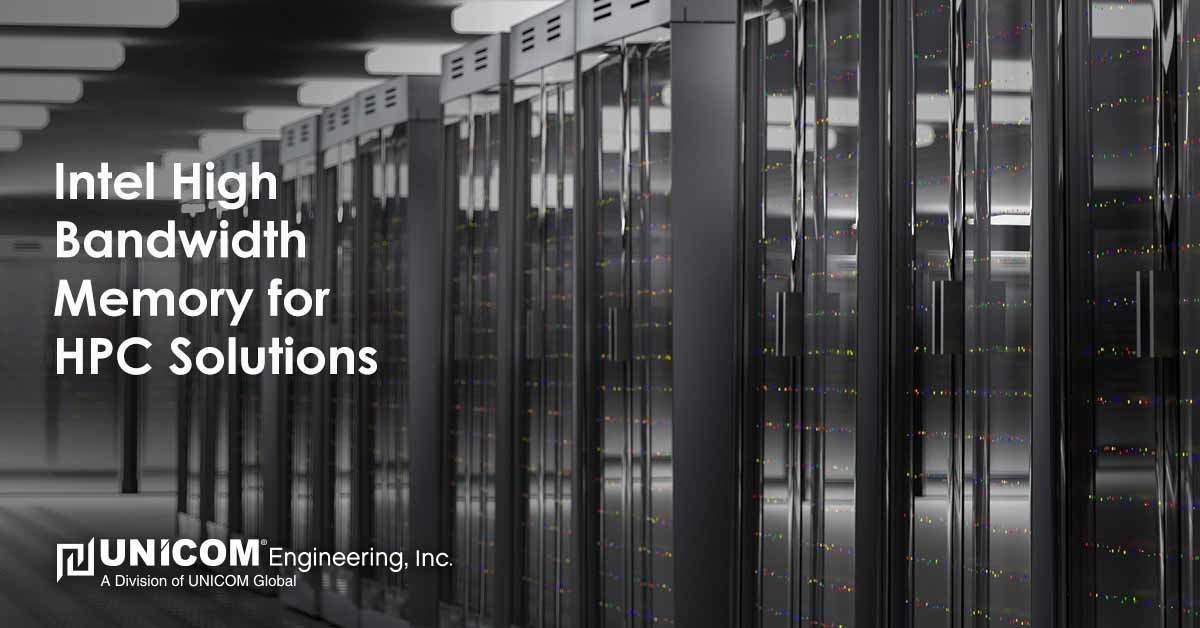If it were up to Intel, memory performance would never be an obstacle to your solution's performance. And with multiple high bandwidth memory (HBM) memory modes, 3rd Generation Intel Xeon Scalable processors are driving improvement in a growing list of industries.
With an extensive list of industry use cases, there are many ways Intel high performance computing (HPC) with HBM can drive your solution further.
Manufacturing
For solutions in financial services, HPC is often necessary to deliver accurate computing results to make their solutions competitive and compliant. Whether it is in risk analysis, trading strategy refinement, time-series analytics, or other vital metrics, 3rd Gen Intel Xeon Scalable processors consistently deliver gen-over-gen gains. With these gains, financial solution providers can offer the real-time insights and analysis required in economic decision-making, from retail-oriented services to investing applications.
Financial Services
For various computer-aided engineering (CAE) applications, 3rd Gen Intel Xeon Scalable processors deliver significant generation-over-generation improvements. These advances enable design teams to provide better-performing applications with never before seen business impact. As a result, business leaders can bring their products to market faster with a more significant ROI. Examples include Ansys LS-DYNA, Converge, Numeca, OpenFoam, and Altair Radioss.
Life Sciences
As healthcare innovators race to find the latest cures, they rely on HPC solutions to reduce the time to market for new treatments and improve the process of disease diagnosis and treatments. To aid their efforts, 3rd Gen Intel Xeon processors are delivering significant performance improvements in NAMD, GROMACS, LAMMPS, and RELION.
Energy
Solution providers serving the energy industry continue to make better use of sensors to enhance energy exploration and operations. And to handle the deluge of new data being created by these sensors, they're increasingly moving to decentralized HPC architectures. For example, upstream use cases include finding oil and gas deposits, analyzing specific reservoirs, and maximizing hydrocarbon recovery. On the downstream side, HPC sensors are being used to increase the operational efficiency of refineries. And electrical utility companies, HPC solutions assist with grid monitoring and maintenance and load balancing and forecasting.
Climate
The unfortunate reality of climate change means that weather experts need to improve their forecasting models consistently. For years, improvements in HPC have improved the sophistication of forecasting models. By leveraging the HPC and HBM advances of 3rd Gen Intel Xeon Scalable processors, organizations like the National Oceanic and Atmospheric Administration (NOAA) have continually improved the accuracy and timeliness of their forecasts.
Essential to Powering HPC - Intel High Bandwidth Memory
While Intel's legacy of generation-over-generation processing improvement remains intact, they've also enhanced application performance with better memory use. High bandwidth memory is a way of better using the CPU's processing speed by enabling it to receive, process, and manage more data.
In their 3rd Gen Intel Xeon Scalable Processors (Code name Sapphire Rapids), Intel delivers 64 GB of high bandwidth memory per socket and eight channels of DDR5. To make use of this innovation, solution providers can select from three memory modes:
HBM Only Mode - This mode is used in servers that don't have DDR modules installed. It enables the use of HBM exclusively for the entire operation of the server - applications, OS, and other services. If memory consumption is higher than 64 GB per socket, the memory required for applications and the OS can decompose that memory across multiple sockets. Intel recommends using the numastat Linux utility or Intel VTune profiler to measure memory consumption. No software modifications are required to run this memory mode.
Cache Mode - This memory mode makes HBM memory transparent and uses it for cache for the DDR memory. Like the HBM-only mode, the cache memory mode does not require software modification. Doing so allows applications to exceed memory usage of 64 GB per socket.
Flat Mode - Flat mode enables applications to use HBM memory while the OS and other services use DDR memory. This configuration allows the applications to have sole use of HBM memory, thus, in some cases, enabling their best possible performance. However, modifications to a solution's code may be necessary to operate the CPU in this mode.
Is it Time for Your Solution to Leverage Intel HPC Powered by HBM?
As you know, HPC is enabling applications to process more data in more places than ever. And thus, you may be already exploring how HPC and HBM can power your solution forward. If not, remember that, as you read this, your competitors might be considering it. So, to keep your solution leading the way, think of how the unprecedented power of HPC powered with HBM can have on an application like yours and how you can take advantage.
As a first step, look to UNICOM Engineering to provide the systems integration expertise you need to power your solution. As an Intel Technology Provider and a Dell Technologies Titanium OEM Partner, they're able to supply, build, and support the best hardware to meet or exceed the needs of your application and help you bring it to market faster. Schedule a consultation today to learn more about how UNICOM Engineering can keep you moving forward.
